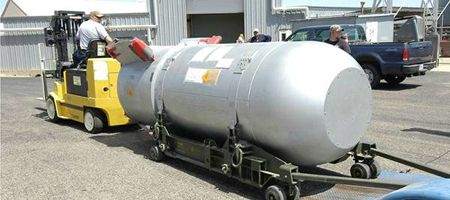The US National Nuclear Security Administration (NNSA) has dismantled its oldest nuclear weapon, the last of its B53s.

The dismantlement of the 1960s weapon system follows President Obama’s 2009 promise to reduce the country’s stockpile of nuclear weapons, and comes 12 months ahead of schedule.
“The dismantlement of the B53 bomb – the oldest weapon in America’s arsenal and one of the largest in US history – is a major accomplishment that has made the world safer and for which everyone involved should be proud,” says deputy secretary of energy Daniel Poneman.
“Safely and securely dismantling surplus weapons is a critical step along the road to achieving President Obama’s vision of a world without nuclear weapons.”
The B53 bomb, designed by NNSA’s Los Alamos National Laboratory and Sandia National Laboratories, was introduced in 1962 and retired in 1997. About the size of a minivan and weighing 10,000 pounds, it’s been one of the longest-lived and highest-yield nuclear weapons ever.
Under NNSA’s Seamless Safety for the 21st Century (SS-21) process, the dismantlement process includes four steps. It’s first retired, and then returned to NNSA’s Pantex plant.
Here, the high explosives are separated from the special nuclear material, and all material and components are processed, being reused if possible.
“The elimination of the B53 is a significant milestone in our efforts to reduce the number of nuclear weapons and implement President Obama’s nuclear security agenda. Today, we’re moving beyond the Cold War nuclear weapons complex that built it and toward a 21st century Nuclear Security Enterprise,” says NNSA administrator Thomas D’Agostino.
“I applaud the outstanding work done by the dedicated men and women across our enterprise to ensure that the B53 dismantlement program was safely completed 12 months ahead of schedule, and appreciate their continued commitment to working in challenging environments to advance a critical national security mission.”






